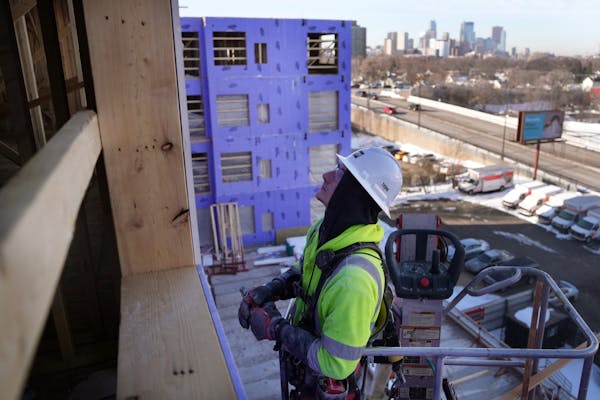Minnesota has finally attained a long-awaited milestone: recovering all private sector jobs — everything except government positions — lost in the first months of the pandemic.
The U.S. reached that benchmark last summer. But with a tighter labor market than the nation as a whole, Minnesota has seen a slower recovery coming out of the pandemic. The state made solid progress in the first couple months of 2023, with two consecutive months of strong job gains.
New data released Thursday showed the state added 10,100 jobs in February despite signs that wage growth is slowing down. That pushed the state 2,800 jobs past the pre-pandemic level of private-sector jobs.
It also came on top of 14,200 more jobs in January, a number revised slightly higher that remains the most gained in a year.
Meanwhile, the state unemployment rate ticked up one-tenth of a percentage point in February to 3%. But it's still lower than the U.S. jobless rate of 3.6%.
The U.S. has also posted stronger-than-expected job growth in recent months despite the Federal Reserve's recent interest rate hikes aimed at cooling down the economy and bringing down high inflation.
"Our economy is still strong in terms of consumer demand," said Angelina Nguyen, labor market information director for the Minnesota Department of Employment and Economic Development (DEED). "Consumers are still buying things ... and businesses are profiting. They need more workers to meet consumer demands."
When government jobs are also included, Minnesota still needs a little more growth to get back to the number of jobs it had before the pandemic. The state has recovered nearly 98% of the 416,000 total jobs lost from February to April 2020.
Construction, which added 2,200 jobs, led the way with job growth last month.
Other services followed with 1,800 jobs, manufacturing with 1,500 jobs, professional and business services with 1,300 jobs as well as education and health services with 1,000 jobs.
At the same time, wages in Minnesota aren't growing as fast as they were last year. Average hourly earnings of private-sector employees rose 2.2% through the year in February compared to more than 5% and even 6% in most months of 2022.
While employers have used higher wages as a recruitment tool, Nguyen said it's natural for them to taper off at some point.
"Employers can raise wages for only so long and up to a certain point," she said.
She added that wages are still not keeping up with inflation, which rose 6% throughout the year in February.
It was also a mixed month for progress on the state's racial disparities. The Black unemployment rate in Minnesota continued to show improvement, declining by two-tenths of a point to 3.4% while the white unemployment rate rose slightly to 2.4%.
But the Latino jobless rate jumped to 4.8% from 3.3% in January. The unemployment rates for racial groups are based on 12-month moving averages because of the smaller sample sizes.
Nearly 1,200 workers in Minnesota left the workforce last month, leading to a slightly lower labor force participation rate of 68%.
The state still has about 45,000 fewer workers in its labor force than it did before the pandemic.

Bushel Boy, Minnesota's local tomato grower, sold
After 60 years, federal cuts shutting down Job Corps center in St. Paul

In a first, Minnesota doctors walk their own picket line, then hustle to see patients
It's harder to find a job this year, especially a corporate position

